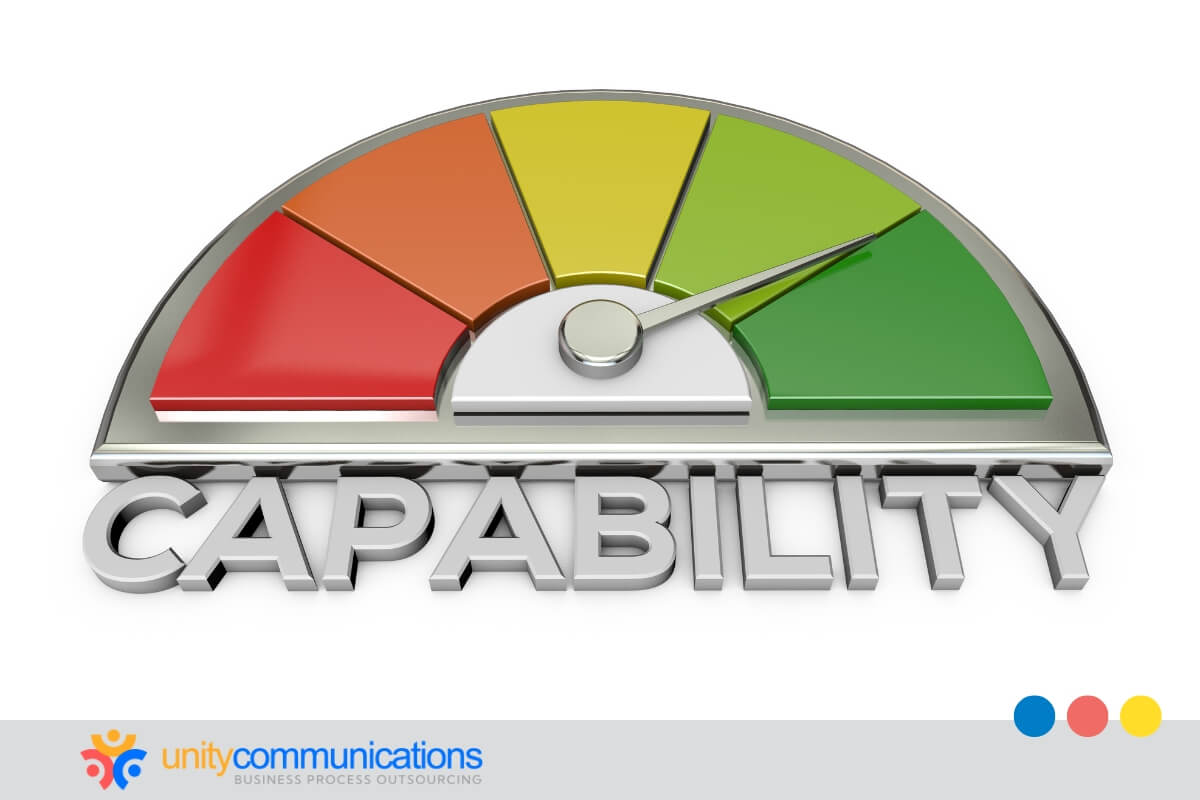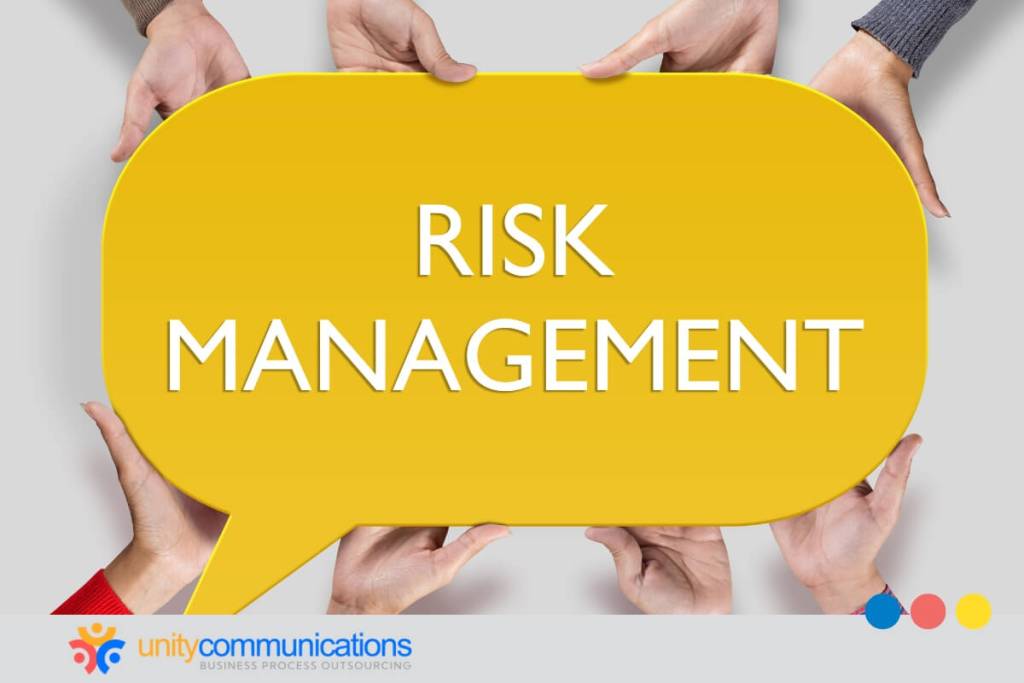Table of Contents
More companies partner with multiple outsourcing vendors to enhance scalability, improve efficiency, leverage specialized expertise, and lower operational risks.
However, along with these benefits come the challenges that can harm the business if not managed effectively. These range from miscommunication to service disruptions, data breaches, and reputational damage.
The key is strategic planning that maximizes business process outsourcing (BPO) benefits while minimizing risks. This guide reveals nine proven risk mitigation strategies in multi-vendor outsourcing to help you maintain control, protect your operations, and turn multi-vendor complexity into a competitive advantage.
What is multi-vendor outsourcing and why does it matter

What is BPO in a multi-vendor context, and why is it important? Multi-vendor outsourcing means partnering with several specialized service providers instead of relying on a single contractor. This approach streamlines operations, lowers costs, and enables you to concentrate on core activities.
Traditionally, businesses hire only a single BPO provider. However, as their needs and goals change and competition intensifies, they require a faster way to scale and achieve business continuity. Companies choose multi-vendor strategies to:
- Reduce risk exposure by distributing responsibilities across multiple vendors.
- Access specialized expertise from industry-leading providers in each function.
- Maintain greater control over vendor relationships, performance, and supplier risk.
- Enable proactive risk detection through diversified vendor monitoring systems.
- Drive innovation and scalability with flexible resources and emerging technologies.
Multi-vendor outsourcing strengthens resilience and competitiveness. However, running smoothly requires excellent coordination, collaboration, alignment, and oversight.
The following section outlines nine risk mitigation strategies for multi-vendor outsourcing, designed to reduce disruptions and maintain consistent performance across all partnerships.
9 proven strategies to mitigate multi-vendor risks
According to Statista, the global BPO market is expected to increase from $415.73 billion in 2025 to $491.15 billion by 2030, driven by rising demand for cost efficiency, digital transformation, and specialized third-party services.
However, the popularity of BPO also necessitates risk mitigation tactics, especially for those engaging in multi-vendor outsourcing, to remain agile, competitive, and compliant. Let’s explore nine proven strategies to reduce risk and maintain consistent performance across multiple outsourcing partners.
1. Create clear and protective vendor contracts
BPO deals and similar vendor contracts are your first defense against operational and reputational risks. Specific clauses can address penalties for data breaches, delays, or non-compliance with your internal policies. Clear agreements maintain alignment, accountability, and control. Business process outsourcing agreements should outline:
- Roles, responsibilities, and deliverables in plain terms
- Service-level agreements (SLAs) tied to measurable outcomes
- Data ownership, data protection, and audit rights
- Periodic risk assessment and performance reviews
- Clauses for triggering contingency plans when service interruptions occur
- Provisions to manage and adapt to the potential impact of vendor failure
An industry survey reveals that 85% of companies conduct risk-based compliance checks on third-party partners. Over half of them review these risks at the beginning of a contract and regularly. This indicates a growing shift toward embedding risk controls early in the relationship.
2. Implement continuous vendor monitoring
Service provider performance and risk exposure can shift quickly in a multi-vendor environment. Without consistent oversight, minor gaps can grow into broader disruptions. Continuous evaluation is a foundational part of risk mitigation in multi-vendor outsourcing, giving procurement teams the clarity to catch changes early and respond with control.
This supports the larger risk management process by identifying weak points before they escalate. It also highlights which external partners deliver lasting value versus those slipping behind. Ongoing assessment helps avoid service issues and misaligned delivery for multi-vendor outsourcing setups.
Practical evaluation combines operational performance checks with structured risk assessments. It can include:
- Quarterly or bi-annual performance reviews tied to key performance indicators (KPIs)
- Real-time service-level monitoring with built-in alerts
- On-site or remote audits to validate contract compliance
- Scorecards comparing vendor results across the same function
- Risk mapping tied to business continuity, compliance, or financial exposure
- Cross-functional reviews with legal, information technology (IT), and operations involvement
A recent study indicates that 85% to 87% of companies monitor risks throughout the third-party lifecycle, from initial sourcing to ongoing oversight. This underscores the importance of identifying early signals and shifting vendor relationships when needed. It’s about obtaining the complete picture to prevent disruptions or vendor misalignment.
3. Establish clear internal ownership of vendor oversight
Internal accountability plays a significant role in risk mitigation in multi-vendor outsourcing. When ownership is unclear, oversight gaps widen.
Assigning dedicated staff or teams to manage vendor categories prevents this fragmentation. Clear ownership improves responsiveness to issues, accelerates escalation, and enables better vendor performance and contract terms tracking.
Ownership also supports better vendor collaboration by providing a consistent point of contact. It facilitates closer coordination across procurement, legal, IT, and operations during audits, service reviews, or risk assessments. You can strengthen internal oversight:
- Assign vendor leads by function, geography, or risk level.
- Use internal dashboards to track vendor updates, risks, and KPIs.
- Schedule monthly check-ins with internal teams responsible for vendor management.
- Document and review vendor decisions for accountability.
- Rotate oversight roles and responsibilities annually to reduce bias and bring a fresh perspective to vendor evaluation.
Clear internal roles reduce ambiguity and improve governance across vendor relationships.
4. Foster strong cross-vendor communication
When vendor communication falls into silos, providers might duplicate efforts or experience misalignment, misinterpretation of goals, and delayed project execution. Effective communication addresses these problems.
Transparent dialogue among vendors fosters accountability. Structured updates and shared reporting formats ensure clear expectations.
According to the 2024 State of Business Communication report, 51% of executives experienced better customer satisfaction from effective communication. About 45% strengthened their brand reputation, while others secured more deals and reduced costs.
Improve how vendors interact with each other and you for smoother operations and risk mitigation in multi-vendor outsourcing. Tactics include:
- Standardize reporting templates to reduce confusion and save time.
- Appoint vendor-facing leads for consistency across meetings and escalations.
- Set communication protocols for incidents and routine check-ins.
- Hold regular cross-vendor meetings to align on timelines, dependencies, and scope.
Effective communication enhances vendor efficiency and mitigates risks associated with missed updates, misaligned expectations, delayed responses, or unclear priorities.
5. Enforce robust legal and compliance controls
Regulatory scrutiny continues to rise, and outsourcing agreements are no exception. Without robust legal oversight, you face exposure to fines, service interruptions, or negative brand impact. Legal frameworks help define accountability, reduce ambiguity, and support a consistent risk response plan.
Compliance also strengthens risk mitigation in multi-vendor outsourcing. It provides a shared standard for how vendors should handle contractual obligations and unexpected scenarios. Here’s how to apply compliance checks and legal controls across your vendor network:
- Conduct initial and ongoing vendor compliance reviews with legal counsel.
- Include audit clauses on vendor practices and documentation on agreements.
- Monitor regional legal changes that affect outsourced operations.
- Utilize third-party platforms or legal partners for scalable contract management and tracking.
- Include licensing, intellectual property (IP) rights, and contract jurisdiction.
- Design reviews to align with industry and regional laws.
Protecting your business with legal safeguards reduces liabilities, facilitates smoother cross-border operations, and reinforces vendor accountability.
6. Prioritize data security and privacy protection
Research reveals that 58% of government breaches stem from third-party vulnerabilities. This insight highlights the value of securing information when outsourcing, even for private companies.
Vendors often access sensitive data when delivering outsourced services. Without robust security protocols, you increase the risks of cyberattacks, regulatory penalties, and erosion of customer trust. A single vulnerability can also ripple across every connected partner.
Outsourcing strategies must treat data protection as a shared responsibility. Acquisition teams should assess how each BPO provider handles data security, from encryption practices to incident response, across the entire vendor lifecycle. Build effective data protection strategies:
- Set minimum encryption and access control requirements in every vendor contract.
- Audit security measures before onboarding and periodically thereafter.
- Review each vendor’s breach response and customer notification policies.
- Ensure vendor adherence to local and international privacy regulations.
For companies relying on multi-vendor setups, strong security frameworks support risk mitigation in multi-vendor outsourcing by preventing gaps that could lead to data breaches, compliance violations, or service disruptions.
7. Develop comprehensive crisis response and backup plans
Unexpected events can disrupt service delivery, delay timelines, or expose critical data. A clear disaster response plan is essential because multi-vendor setups can multiply the number of possible failure points.
Procurement managers and operations teams must assess each vendor’s preparedness, including internal contingency plans, recovery time objectives, and communication protocols, in the event of incidents. Coordination between partners maintains stability when one provider faces challenges. Other risk mitigation strategies in multi-vendor outsourcing:
- Require every vendor to submit and update documented disaster recovery plans.
- Run joint tabletop exercises simulating cyberattacks, system failures, or delays.
- Identify fallback vendors or alternative workflows for mission-critical services.
- Set escalation triggers for real-time alerts and coordinated response actions.
- Conduct quarterly audits of incident response plans.
Coordinated crisis responses limit damage and preserve trust with stakeholders. In multi-vendor environments, they preserve service continuity and accelerate recovery.
8. Align vendor culture with your organization
Vendor performance isn’t just about skills or tools. Values, ethics, and working styles also shape it. Cultural misalignment can lead to breakdowns in communication, inconsistent quality, and higher operational risk across a multi-vendor setup.
On the other hand, when vendors operate with a similar mindset, sharing priorities, communicating expectations, building trust, and acting fast when issues arise are easier. Cultural alignment supports long-term stability as part of a broader risk mitigation plan in multi-vendor outsourcing. Here’s how to build culture-fit strategies:
- Add culture-fit questions to your vendor vetting checklist and request for proposal (RFP) scoring.
- Request outsourcing case studies or references that reflect the desired collaboration style and values.
- Include cultural compatibility in your risk evaluation framework.
- Host joint onboarding sessions to align expectations early.
Risk officers and procurement leads often focus on terms and performance metrics. However, understanding how vendors handle conflict, manage teams, or view compliance is just as important as knowing their capabilities. Evaluating their culture and mindset during the selection process can reduce future friction.
9. Build flexibility into vendor agreements
Risk factors are dynamic. Changes in regulations, market conditions, the economy, political unrest, or global events can alter third-party exposure overnight. Static or rigid contracts might restrict response options and delay protective actions. Your business needs room to adjust.
Flexible outsourcing agreements support the risk management process without requiring renegotiation. Clauses around service levels, pricing, and deliverables can account for fluctuations, helping maintain control when conditions shift.
Adaptable terms also expedite the onboarding of backup providers or the scaling down of commitments with underperforming partners without harming ongoing delivery. Here’s how to structure flexible vendor terms:
- Draft scalable contract provisions based on service volume or usage.
- Include clauses that allow partial terminations or transitions.
- Add reassessment triggers for scope and pricing every six to 12 months.
- Utilize performance-based incentives aligned with evolving business priorities.
- Allow adjustments during force majeure or compliance changes.
This strategy is central in reducing exposure across outsourced partnerships, where one vendor’s failure can disrupt the broader network.
Choose the right partners to minimize risk

Sourcing the wrong service providers can trigger delays, disputes, or compliance issues. The right BPO partners, on the other hand, improve delivery, strengthen coordination, and support long-term goals. Partner selection directly affects risk mitigation in multi-vendor outsourcing. The failure of one vendor can ripple across the entire service chain. Prioritize providers who offer:
Service capability match
Assess their ability to meet scope, volume, technical requirements, and service consistency across locations, timelines, and capacity thresholds to prevent performance disruptions.
Cultural and ethical fit
Evaluate communication styles, decision-making pace, and values to avoid friction in day-to-day operations. Pay attention to collaboration attitudes and responsiveness, especially during pressure or change, to gauge long-term working compatibility.
Track record with similar clients
Request credentials that reflect experience with your industry, company size, or geographic footprint. This demonstrates how they have handled challenges, scaled services, and built partnerships under comparable conditions.
Risk management approach
Understand how providers identify, respond to, and recover from disruptions, including backup plans and legal protections. Their internal frameworks should directly support risk mitigation in multi-vendor outsourcing to limit ripple effects when another vendor experiences a failure.
Scalability and flexibility
Look for contract structures and operational models that adapt to demand shifts or business changes without adding exposure. Scalable partnerships lower stress during transitions and protect long-term continuity.
Finding reliable outsourcing partners requires more than just price comparisons. You need a structured process that considers operational fit, cultural alignment, and risk insight.
The bottom line

Multi-vendor outsourcing offers significant advantages, but only with proper risk management. With the right contracts, monitoring systems, and flexibility, you can reduce disruptions and maintain operational stability. These nine strategies—from comprehensive contracts to cultural alignment—transform potential vulnerabilities into competitive strengths.
Don’t leave vendor management to chance. Let’s connect and discuss how these proven tactics can strengthen your operations and ensure long-term success.




